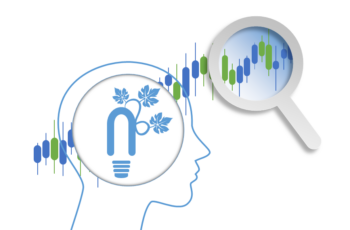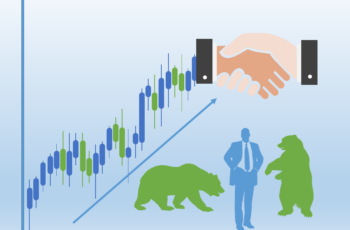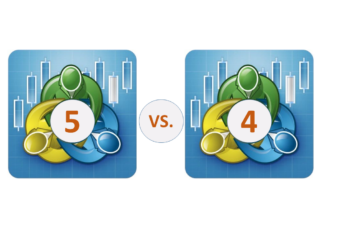What is an index? In a short and simple answer, an index is an average (generally weighted average) of variables. For example, average household spending in a community is a spending index.
Commodities, currencies, fear, consumer price, and producing price… all have indexes. In short, every social and economic phenomenon can have an index. There are even indexes for humans such as Human Development Index (HDI).
Indices represent markets or currencies. When you hear that a market is up, it means that the average of that market is up. And vice versa.
For example, in the U.S. stock market Dow Jones, S&P 500, and NASDAQ are the most tracked indices. And when you hear that the stock market is up or down, they mean one of these indices.
Note: indices is also a plural noun of the index. If you read indices, it means indexes.
What Are Most Followed Indexes Around the World?
Measuring the stock market sentiment based on a single stock (or, other assets) doesn’t represent the true performance of the entire market. One or many stocks/assets can go up while many others go down. There should be a way to measure the average/overall performance of the whole market.
An index solves this problem by measuring the average value of shares/financial asset in a basket of stocks of publicly traded companies.
This article starts with stock indices. In every country with a stock market, there is at least one stock market index. Larger economies have multiple indexes for various purposes, and small economies have a few or one indexes.
This article does not cover all indexes and not even in detail. It only lists the most tracked indices from major economies and commodity indices. Moreover, it explains currency indexes too.
The U.S. Stock Market Indexes
The United States is the largest economy in the world. Financial firms have created many indices and each of them for specific purposes.
Several stock exchanges in various states exist in the USA.
Here are some of the stock exchanges in the USA:
- New York Stock Exchanges (NYSE)
- National Association of Securities Dealers Automated Quotations (NASDAQ)
- The Chicago Board of Trade (CBOT)
- The Chicago Mercantile Exchange (CME)
- The Philadelphia Stock Exchange (PHLX)
Among all stock exchanges in the USA, the NYSE and NASDAQ are the most significant exchanges, in which the largest and most liquid companies are listed. And most components of American stock indices are listed on these two giant exchanges.
The following table shows the top three U.S. stock market indices.
| Index Name | Description |
|---|---|
| Dow Jones Industrial Average (DJIA) | DJIA consists of 30 prominent companies listed on NYSE and NASDAQ in the United States |
| Standards & Poor’s 500 (S&P 500) | S&P 500 index tracks the stock performance of 500 of the largest companies listed on the NYSE, NASDAQ, and Cboe BZX Exchange in the United States |
| NASDAQ Composite | NASDAQ composite includes almost all stocks listed on the Nasdaq stock exchange covering over 2500 stocks |
China Stock Market Indexes
China is the second largest economy in the world in terms of nominal and the first largest in terms of Purchasing Power Parity (PPP).
This article speaks about stock market indices in mainland China, not specially administered regions such as Hong Kong and Macao.
The three most prominent exchanges in China are Beijing Stock Exchanges (BSE), Shanghai Stock Exchanges (SSE), and Shenzhen Stock Exchanges (SZSE).
So, components of the following indices are publicly traded companies listed in these three exchanges.
| Index name | Description |
|---|---|
| Shanghai Composite (SSEC) | The SSE Index is a stock market index that reflects all stocks traded on the Shanghai Stock Exchange. |
| SZSE Component (SZI) | The SZSE Component Index is a stock market index that contains 500 largest and most liquid A-shares, traded on the Shenzhen Stock Exchange (SZSE). |
| CSI 100 Index | The CSI 100 Index replicates the performance of the top 100 stocks traded on the Shanghai and Shenzhen stock exchanges. |
| CSI 1000 (CSI1000I) | The CSI stands for China Securities Index, and the CSI 1000 Index includes 1,000 stocks with relatively small scale and good liquidity after excluding the CSI 800 Index components (the CSI 300 + the CSI 500). |
Japan Stock Market Indexes
Japan is the third largest economy in the world. It was the second-largest economy before 2010, which was overtaken by China.
The most well-known stock exchange in Japan is the Tokyo Stock Exchange (TSE). There are also other exchanges such as Osaka, Nagoya, and Fukuoka exchanges.
However, outside of Japan, investors mostly follow the TSE and Indexes managed by the TSE.
The following table shows the top three Japan’s stock market indices
| Index name | Description |
|---|---|
| Nikkei 225 (N225) | Nikkei 225 includes the top 250 publicly traded companies listed on the Tokyo Stock Exchange. |
| Nikkei Volatilities (JNVI) | Nikkei Volatilities Index indicates the expected degree of fluctuation of the Nikkei Stock Average in the future. A greater value means that investors expect greater fluctuation in the market and vice versa. |
| Topix (TOPX) | Tokyo Stock Price Index (TOPIX) tracks all domestic companies of the exchange’s Prime market (those companies that meet global standards) division, calculated and published by the TSE. |
Germany Stock Market Indexes
Germany is the largest economy in Europe. So, it is expected to exist multiple stock exchanges in Germany.
In total, there are eight stock exchanges in Germany. And top four of them are the Berlin Stock Exchange, Frankfurt Stock Exchange, and Stuttgart Stock Exchange. Among all of them, Germany’s largest stock exchange is the Frankfurt Stock Exchange.
That is why most followed sock index track publicly traded companies listed on the Frankfurt Stock Exchange.
And here are top three Germany stock market indices.
| Index name | Description |
|---|---|
| DAX 40 (GDAXI) | DAX 40 includes the forty largest German companies trading on the Frankfurt Stock Exchange. |
| DAX Midcap Index (MDAXI) | The MDAX includes the 50 Prime Standard shares that rank in size below the companies listed in the DAX 40 index |
| SDAX (SDAXI) | The SDAX index includes 70 small and medium-sized companies immediately below the MDAX index |
The U.K. Stock Market Indexes
London Stock Exchange (LSE) is the only stock exchange in the UK (excluding dependencies and United Kingdom overseas territories).
And all of the following indices belong to the LSE.
| Index Name | Description |
|---|---|
| FTSE 100 | FTSE is a stock index of the top 100 companies (based on capitalization) listed on the London Stock Exchange. |
| FTSE 250 | FTSE 250 tracks the top 250 (after the FTSE 100) listed on the London Stock Exchanges. |
| FTSE 350 | FTSE 350 tracks the top 350 stocks (FTSE 100 + FTSE 250) listed on the London Stock Exchanges. |
France Stock Market Indexes
Euronext Paris is the securities market, formerly known as the Paris Bourse. And all of the CACs stock market indices are managed by Euronext Paris.
The following table shows top five France stock market indexes.
| Index name | Description |
|---|---|
| CAC 40 | The CAC 40 index represents a capitalization-weighted measure of the 40 most significant stocks on the Euronext Paris. |
| The CAC Next 20 | The CAC Next 20 is the 20 next-largest companies by market capitalization after the CAC 40 companies. |
| The CAC Mid 60 | The CAC Mid 60 contains the 60 companies by market capitalization below the 60 largest firms (CAC 40 + the CAC Next 20). |
| SBF 120 | The SBF 120 includes the 120 most actively traded French stocks on the Euronext exchange. It includes CAC 40, CAC 20, and CAC Mid 60 Indexes. |
| CAC All-Tradable | The CAC All-Tradable is a French stock index that tracks companies’ stocks from all sectors. |
India Stock Market Indexes
India is a fast-growing economy. It is expected that India is the next one that challenges the Chinese economy.
In India, there are over 20 stock exchanges. The two prominent exchanges are the Bombay Stock Exchange (BSE) and the National Stock Exchange (NSE). And the following stock indices are managed by one of these exchanges.
| Index name | Description |
|---|---|
| Sensex | Sensex stands for sensitivity index. It reflects the price of movement of the 30 largest stocks in the Bombay Stock Exchange (BSE) |
| Nifty 50 | Nifty stands for National fifty. It is an index that includes the top 50 equity stocks traded in the National Stock Exchange (NSE) of India. |
| Nifty Midcap 50 | NIFTY Midcap 50 includes the top 50 companies after the Nifty index (that includes the top 50) traded on the National Stock Exchange (BSE) of India. |
Australia Stock Market Indexes
Australia has the most stable economy among developed nations. It is a commodity economy due to vast natural resources and is expected to continue its current trend.
There are three exchanges in Australia:
- Australian Securities Exchange (ASX) was formed by merging the Sydney Futures Exchange and the Australian Stock Exchange back in 2006.
- Cboe (formerly Chi-X) is a stock exchange based in Sydney Australia.
- National Stock Exchange of Australia (NSX)
The following table shows the two well-known indices in Australia
| Index name | Description |
|---|---|
| ASX 200 (XJO) | ASX is a stock market index comprising the 200 largest companies listed on the Australian Securities Exchange. |
| All Ordinaries (XAO) | The All Ordinaries (XAO) tracks the 500 largest companies listed on the Australian Securities Exchange (ASX) based on market capitalization. |
Canada Stock Market Indexes
There are four stock exchanges in Canada: Toronto Stock Exchange (TSX), Toronto Venture Stock Exchange (TSXV), Montreal Exchange (MX), and Neo Exchange (NEO).
However, the most prominent one is the TSX which investors follow its indexes. And they are:
| Index name | Description |
|---|---|
| The S&P/TSX Composite Index | The S&P/TSX is a stock market index that reflects around 230 companies on the Toronto Stock Exchange in Canada. |
| The S&P/TSX SmallCap Index | The S&P/TSX SmallCap Index is the stock price change of companies whose market capitalization is less than $2B but over $250m. |
Commodity Indices
Commodity indexes are a lot.
Investors track some commodities, such as gold and oil separately, and stress their importance more than other commodities. Oil and gold are crucial players in the world economy, specifically, oil. And gold is considered true money due to its scarcity and its roles in history.
The following table shows commodity and other most followed indexes internationally.
| Index name | Description |
|---|---|
| The S&P CSCI | The S&P Goldman Sachs Commodity Index ) GSCI is a commodity market index measuring commodity performance over time. This index includes 24 commodities from all commodity sectors – energy products (containing a higher exposure), industrial metals, agricultural products, livestock products, and precious metals. |
| Bloomberg Commodity Index | The Bloomberg Commodity Index tracks the price of performance of diversified commodities. It contains about energy 30%, grains 22.5%, precious metals 20%, industrial metals 14.5%, softs 7% and livestock 5%. |
| Dow Jones Commodity Index | Dow Jones Commodity Index includes energy, agriculture, livestock, and metals. These commodities are often more liquid such as gold. |
Currency Indexes
A currency index shows its strength against a basket of other major currencies in the Forex market.
It is difficult to grasp the value of a currency only with the exchange rate of two currencies such as EURUSD. But we can understand the value and direction of a currency better by looking at its index.
For example, if the USDEUR is rising, it doesn’t necessarily say that the USD appreciates because the EUR could depreciate faster than the USD which shows the USDEUR rising. A better way to see the performance of the USD is by looking at its index which contains multiple currencies. This method is better because the USD is compared against various currencies, representing multiple economies.
The weight of each currency in the basket depends on the trading volume between the nation that its index is calculated and the nation that its currency is in the basket. For example, the Euro in the USD Index represents 57.6% while the Swiss France 3.6%.
Unfortunately, the basket of a currency index rarely changes. That is why a currency index may not measure the true strength of a currency. For example, the U.S. trade with China and Mexico more than the entire European Union, while the Chinese Yuan and the Mexico Peso has no place in the DXY basket.
In the following table currency indexes are explained briefly with their constituents in terms of percentage. And I found some of these indices constituents on a Japanese website, https://milli-pro.com/ which seems to be more true than other sources.
Disclaimer: The types and ratios of currencies that make up the currency indexes differ from institution to institution. You can check all of the mentioned ticks/symbols in the following table, on tradingviw.com. However, we do not know exactly the types, ratios, and their components. So, there is no accuracy guarantee from our side.
| Index name | Description |
|---|---|
| U.S. dollar Index (DXY) | The US Dollar Index (DXY) measures the value of the dollar against six other major currencies. The weight of Euro in the basket is (57.6%), the Japanese Yen (13.6%), the Pound Sterling (11.9%), Canadian Dollar (9.1%), Swedish Krone (4.2%), and Swiss France (3.6%). |
| Euro Index (EXY) | The Euro Index represents the arithmetic ratio of four major currencies against the Euro. And each of them has an equal weight of 25%. These currencies are the USD, Japanese Yen, Great Britain Pound, and the Swiss Franc. |
| Japanese Yen Index (JXY) | The JXY is calculated by each ratio for about 40 currencies, and the five currencies, Chinese Yuan (32%), USD (16%), EURO (13%), Korean Won (6%), and the New Taiwan Dollar (5%) account for a large proportion of 72%. And others account for 28%. |
| British Pound Currency Index (BXY)/Bloomberg Pound Index (BPX) | There are several versions of the British Pound Index with varying component weights. All of them give more weight to Euro and the USD. |
| Swiss Franc Index (SXY) | The Swiss Franc Index (SXY) components are eight currencies. They are EUR (46%), USD (12%), Chinese Yuan (11%), GBP (5%), JPY (3$), and others (1.47%). |
| Australian Dollar Index (AXY) | The Australian Dollar Index (AXY) gauges the value of the Australian Dollar by placing it in a currency basket with other liquid currencies. The currencies and weights of the basket components are the Chinese Yuan (27%), Euro (15%), USD (14%), JPY (8%), and others (36%). |
| Canadian Dollar Index (CXY) | Over 50% of Canada’s trade happens with the United States. That is why Canada Currency Index (CXY) consists of the USD (58%), Chinese Yuan (13%), Euro (9%), Mexican peso (5%), Japanese Yen (3%), and others (12%). |
What Is the Use of an Index?
Understanding the economy, market, or sector by looking at a chart of a financial asset is hard/impossible.
That is why an index is essential to understand the overall market because it counts the average. And an average shows a better picture because good and bad assets are counted.
Here are helps that an index can provide:
- It is an economic indicator: An index not only shows the average movement but also sentiments in the market and the underlying market behavior.
- An index is essential in studying Intermarket analysis. Investors rely on indexes to study the relationship among markets, not a single asset in a market.
- Currency indexes are parts of currency correlation that study how fiat money is related to one another





